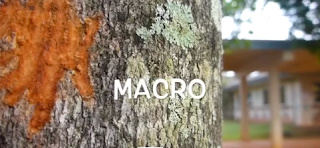My class has recently been working in a program called Scratch. Scratch lets you create and design games. It is very similar to Code.org, except it's more difficult, and not as straightforward. When I was much younger, I often played games similar to the one I made,and remembering that helped me a little to create it. From playing them, I was able to think about how most of the code would be made, and make it. Over the summer before 6th grade, I took a coding course at a nearby college, and that helped a little bit, even though we did not use Scratch in that course. I also knew that I prefer using W, A, S, and D to move instead of the arrow keys, even though I don't play many video games anymore. Some of my code is on the left.
My game is a very simple, easy one. It does have a few bugs that I attempted to fix, but was (sadly) not able to. In the game, you are a ghost and you must chase a bowl of cheesy puffs. As long as you are touching the cheesy puffs, you are getting points. Therefore, you must get a lot (235) points to win. All of which you must do on the moon, adding to the weirdness of the game. I rarely make anything this strange, but I felt like it this time.
I enjoyed making both of the featured games, but I struggled with both of them. I struggled the most with the first game, because I was new to Scratch. My introduction to Scratch basically felt like this: " Here's this coding program called Scratch, so make an account, it's similar to Code.org, now make a game". I was given help by adults, however. ( Almost all of my help came from my parents and the internet). The most difficult bug for me to fix was one in which when my square in my second game landed, it would wait a fraction of a second, then sink a little bit into the ground. I forget how I fixed it or what I changed, but it took me a long time to figure it out. The one thing in my game that I am proud of, though, is a gravity engine. A gravity engine, as the name suggests, simulates real gravity, because a box jumping from platform to platform is very realistic. I'm actually not sure if it works, but I copied my teachers, gravity engine, so it should work.
My game is a very simple, easy one. It does have a few bugs that I attempted to fix, but was (sadly) not able to. In the game, you are a ghost and you must chase a bowl of cheesy puffs. As long as you are touching the cheesy puffs, you are getting points. Therefore, you must get a lot (235) points to win. All of which you must do on the moon, adding to the weirdness of the game. I rarely make anything this strange, but I felt like it this time.
I enjoyed making both of the featured games, but I struggled with both of them. I struggled the most with the first game, because I was new to Scratch. My introduction to Scratch basically felt like this: " Here's this coding program called Scratch, so make an account, it's similar to Code.org, now make a game". I was given help by adults, however. ( Almost all of my help came from my parents and the internet). The most difficult bug for me to fix was one in which when my square in my second game landed, it would wait a fraction of a second, then sink a little bit into the ground. I forget how I fixed it or what I changed, but it took me a long time to figure it out. The one thing in my game that I am proud of, though, is a gravity engine. A gravity engine, as the name suggests, simulates real gravity, because a box jumping from platform to platform is very realistic. I'm actually not sure if it works, but I copied my teachers, gravity engine, so it should work.














